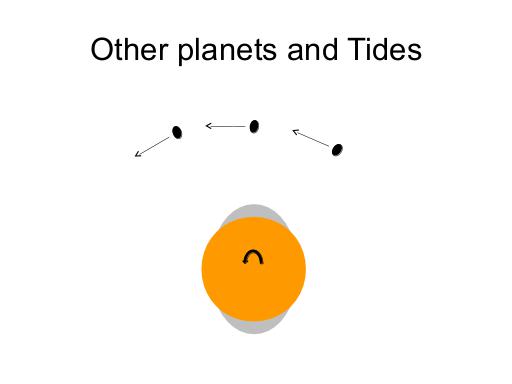
NOTES
The other positions of the orbiting satellite relative to the tidal bulge of the primary are possible, however. If the satellite is below the primary's synchronous orbital radius, the satellite will always be pulling the tidal bulge in the same direction as the primary's rotation - speeding the primary's rotation up, while as the same time, slowing the satellite, putting the satellite into a lower, faster orbit. This is not the long-term situation we saw earlier - in particular, because the closer the satellite is to the primary, the stronger the tidal effects become. The ultimate result is a satellite that crashes into a (now-faster rotating) planet, or a satellite that breaks up into a ring of objects too small to experience (or cause) much tidal force; the rings around Jupiter, Saturn, Uranus and Neptune likely resulted from this kind of situation.
What about the other possibility - with the satellite orbiting directly above the tidal bulge? That happens when the satellite is exactly at the synchronous radius, and when that happens the satellite's orbit is unperturbed by the tides, and the primary's rotation is also unchanged. As we've discussed in other situations, if the primary and the satellite are made of material that is so strong that it doesn't deform in response to the tidal forces, or if they are made of material that can response perfectly to the tides, instantaneously, there will be no kinetic energy losses and orbits will remain unchanged - but that's not a real-life situation.
